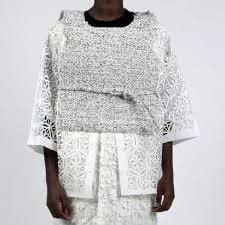Checklist: designing sustainable fashion Achieve positive environmental outcomes without sacrificing form or function.
Design decisions based on sustainability principles is more than using sustainable materials such as textiles, fabrics and dyes. When designing a new fashion product, you can incorporate sustainable principles in a sensible, practical manner without dismissing fundamental design principles.
Our checklist will help you to work by these principles early in the design and manufacturing process.
1. Identify key outcomes in the design brief and concept
The design brief and development will ultimately influence the life-time environmental impacts of the garment, so think about:
- how the pattern will be laid out on flat fabric
- the amount of waste generated
- whether the garment can be constructed in a different way to reduce waste
- exploring ways of reducing labour costs in the manufacturing process, such as 3D knitting.
2. Select sustainable materials
- Consider the life of the garment and select the right textile to minimise wear, tear, stains or the need for specialist cleaning. Natural fibres such as cotton and bamboo have a lower environmental impact than synthetic fibres such as spandax and polyester.
- Select inks and dyes that are non-toxic, natural or vegetable-based.
- Consider composite approaches in your material selection – for example, research shows that 50/50 cotton-polyester mixes are likely to last twice as long as 100 percent cotton sheets and may have a significant reduction in environmental impacts associated with laundering.
- If you adopt sustainable practices in the selection of materials, consider having your products certified organic that will generate goodwill with customers who support sustainable living.
3. Minimise waste during pattern making
- Think about how you can construct the garment in a different way to reduce waste, such as offcuts and end-of-roll.
- Select textiles that have a repeat pattern with no beginning or end, so that the entire roll of fabric can be used.
- When garments are constructed, waste is usually a by-product, so think about how you can reuse or recycle the waste and offcuts.
4. Opt for ethical garment construction
- During the production process, use textile workers that work under ethical conditions.
- Garment labels communicating information on garment use, care and recycling can help consumers to avoid discarding it prematurely and minimise environmental impact during washing.
5. Reduce waste in packaging
- Think about the way you package the finished product and if you could reduce the amount of packaging used.
- Find a local service to recycle packaging.

